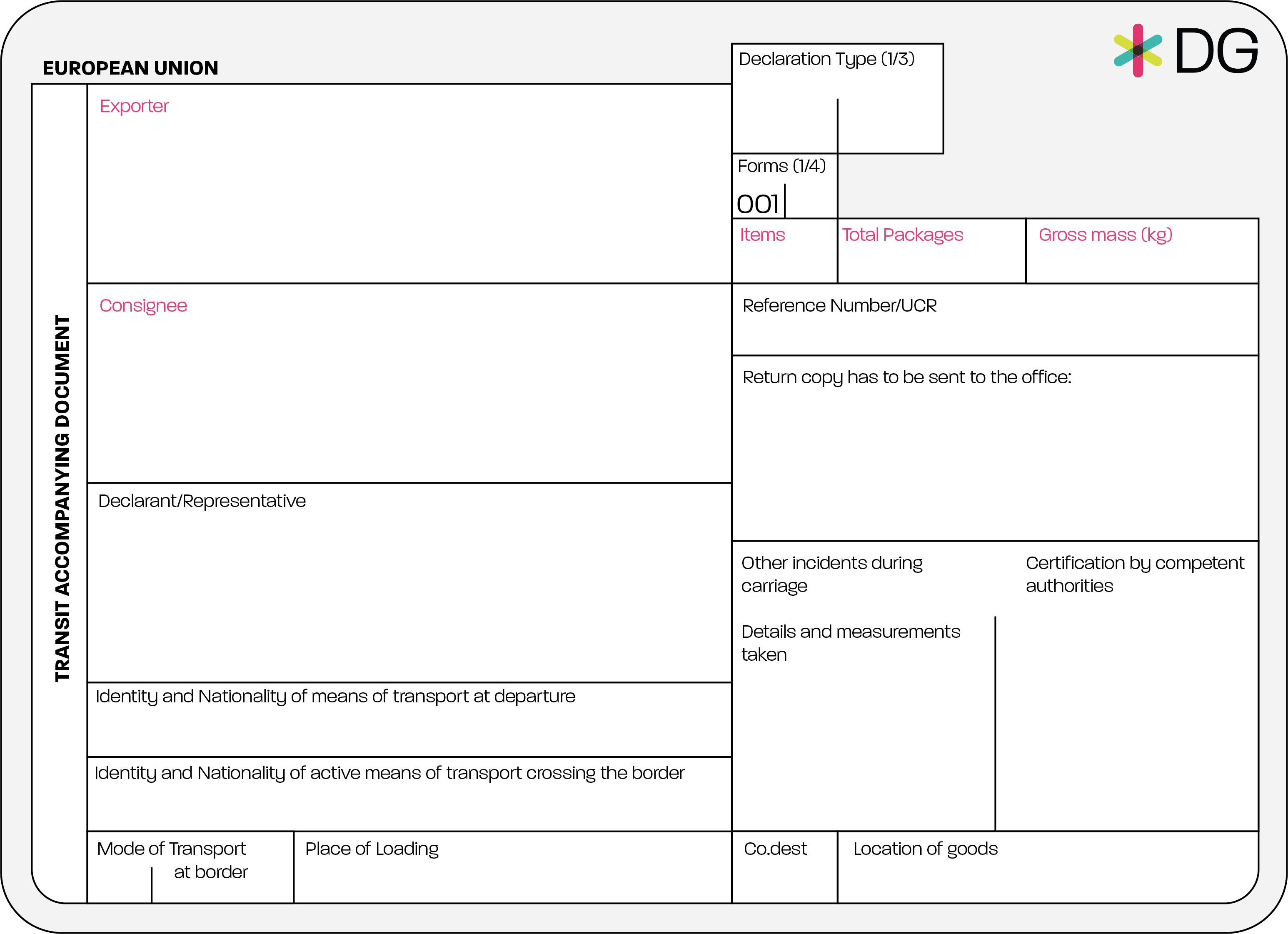Table of contents
- What Is a T1 Transit Document?
- What Is The Difference Between a T1 and T2 Document?
- The T1 Customs Procedure
- Do I Need a T1 Document?
- How To Obtain a T1 Document
- What Other Information Will You Need to Include Within T1 Document?
- How Long Does The Application Process Take?
- How Can a Freight Forwarder Help?
When it comes to preparing and moving your goods within the EU, there are specific restrictions that apply. One requirement when importing into the EU from non-EU territory, is a T1 transit document.
Non-EU manufactured goods require a certain criteria that need to be met before they can be allowed into EU territory. Certain product types such as medicinal products, chemicals, textile products, and agricultural products etc., can face import restrictions, so it is important to check whether these apply to your goods.
You can use the TARIC consultation tool to check if your goods face any restrictions.
If you were to use a reputable AEO certified freight forwarder, they can take care of everything, from the application process to customs, even benefiting from simplified procedures, which means less hassle and time for you to get your cargo where it needs to be.
The process can seem daunting to those new to the industry. This handy article is here to give you a comprehensive guide on what exactly a T1 document is, why you may need one, and how to apply.
What Is a T1 Transit Document?
The T1 document is a shipping note used to start the customs process, in order to transport goods cross border between non-EU and EU countries and their respective customs offices, without incurring any charges.
If you have a T1, import and customs charges will not have to be paid until the goods are at the destination country. The T1 document essentially acts a guarantee to show that you will pay the relevant charges and tax once the freight is at its destination in order to retain control of the goods.
The T1 transit procedure is necessary when transporting non-EU goods into EU territory as well as EFTA-states. EFTA is the European Free Trade Association, and includes four member states which include Iceland, Lichtenstein, Norway, and Switzerland.
What Is The Difference Between a T1 and T2 Document?
Similar to T1, a T2 is still a transit document, however, it is for intra-community transit. This means that it is necessary for transporting community goods: goods that originate from within the EU, or non-community goods that have already been cleared. You will need a T2 document when you are transporting community goods to, or through non-EU member countries.
The T1 Customs Procedure
The T1 procedure is started at the country of departure by the relevant customs authority. You will then have a maximum of seven days, from the initiation of customs to present your cargo to the relevant customs office, where they will examine the goods and perform identity checks. You will also be required to leave a deposit of security which should cover the estimated import charges that would be incurred at the destination of your shipment.
It is worth noting that simplified procedures are available to authorised consignors/consignees, one way being through gaining AEO status. Reputable freight forwarders which hold an AEO certification can manage the customs process, so you don’t have to.
Once the cargo has reached its destination country the T1 procedure will be closed, and once goods have been through customs, you will receive security approval and a dispatch note allowing the goods to be released.
Do I Need a T1 Document?
The primary benefit of a T1 is that no customs duties or tax needs to be paid on non-EU manufactured goods until arrival in the EU. You will need to obtain a T1 document when transporting goods manufactured outside of the EU into its final destination within the EU. You will also require a T1 even if you are unsure whether the goods will be staying within the EU, but are passing through EU territory, as they will likely be held within that country.
How To Obtain a T1 Document
Your freight forwarder or representative will need to lodge an IE015 declaration to the New Computerised transit System (NCTS) at the Office of Departure. The IE015 declaration is strictly a UK-based government platform, but this information can also be found relative to the country you are applying from.
An IE015 is an electronic transit declaration, and this can be lodged to the NCTS via email. If the IE015 is accepted, it will then be processed, and a TAD (Transit Accompanying Document) will be produced. A TAD (Transit Accompanying Document), as the name suggests, is a document that will accompany your shipment.
When filling out your transit document it is important to know what to look for as there are 3 different types. T1 documents will state the declaration type out of three. For a T1 document you will need to make sure it says 1/3 in the Declaration Type box and 001 in the Forms box.

What Other Information Will You Need to Include Within T1 Document?
- No. of packages
- Total weight
- Number of seals
- Customs tariff number, also known as HS Codes
- Information on both consignor and consignee
You can find out more information on how to complete your T1 document application here.

How Long Does The Application Process Take?
Typically, your freight forwarder or logistics specialist will handle the entire process.
However, if you have all requirements and paperwork, prepared, such as a credit check or application form and a signed and returned Letter of Indemnity, the application process on average should take 60 minutes once the completed information has been received and the T1 can be generated.
This is only a guideline.
The time taken to generate a T1 document can range from 45-90 mins and is dependent on the NCTS.
How Can a Freight Forwarder Help?
As a freight forwarder, DG International can take care of this entire process internally, alleviating any confusion or stress resulting from the T1 application and customs processes. As an authorised Customs Broker we have the industry experience and ability to guarantee terms, ensuring the transfer of VAT, as well as declaring border crossings.
If you have any queries, or require shipping solutions from a reputable freight forwarder, do not hesitate to contact us.





